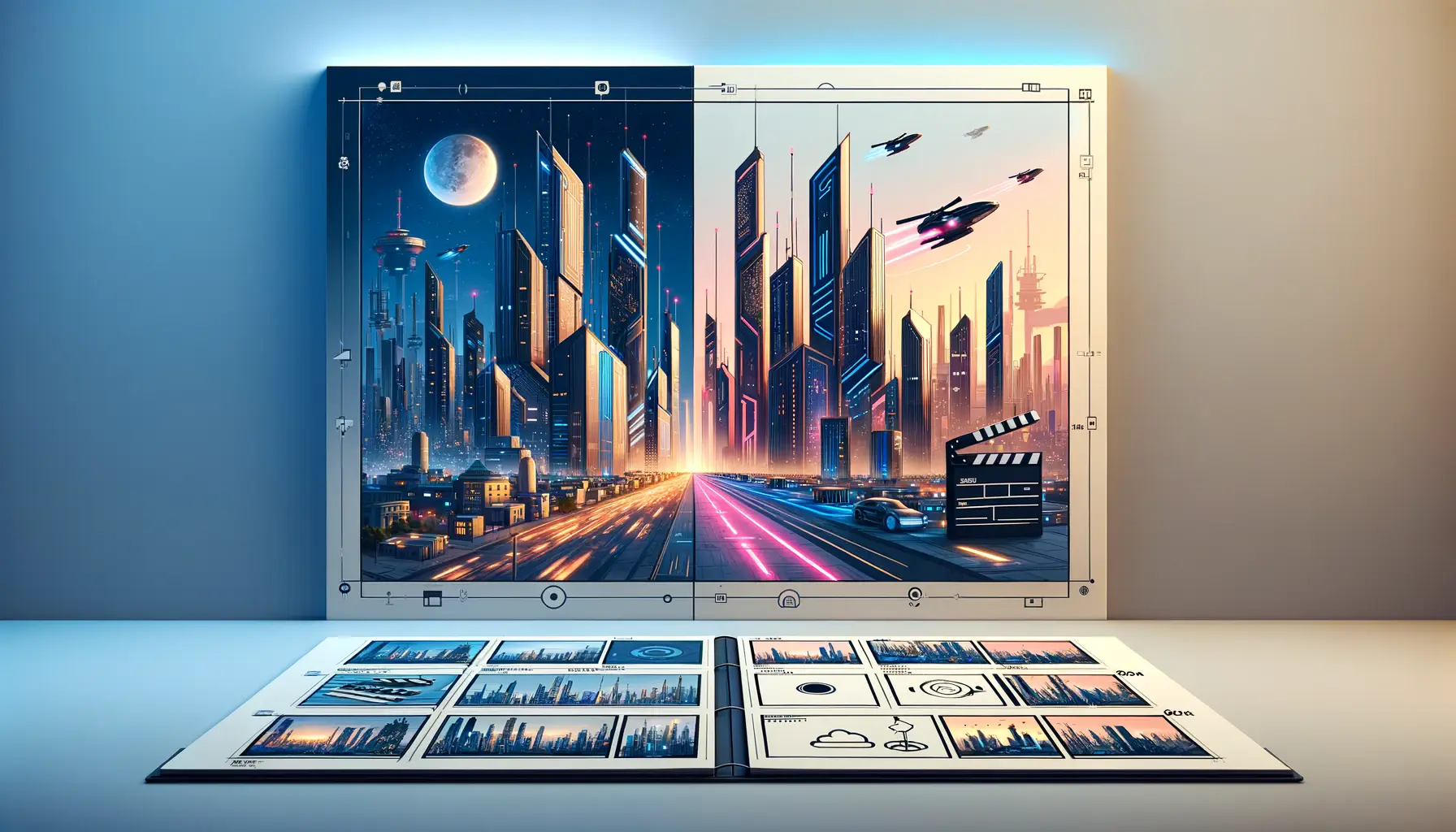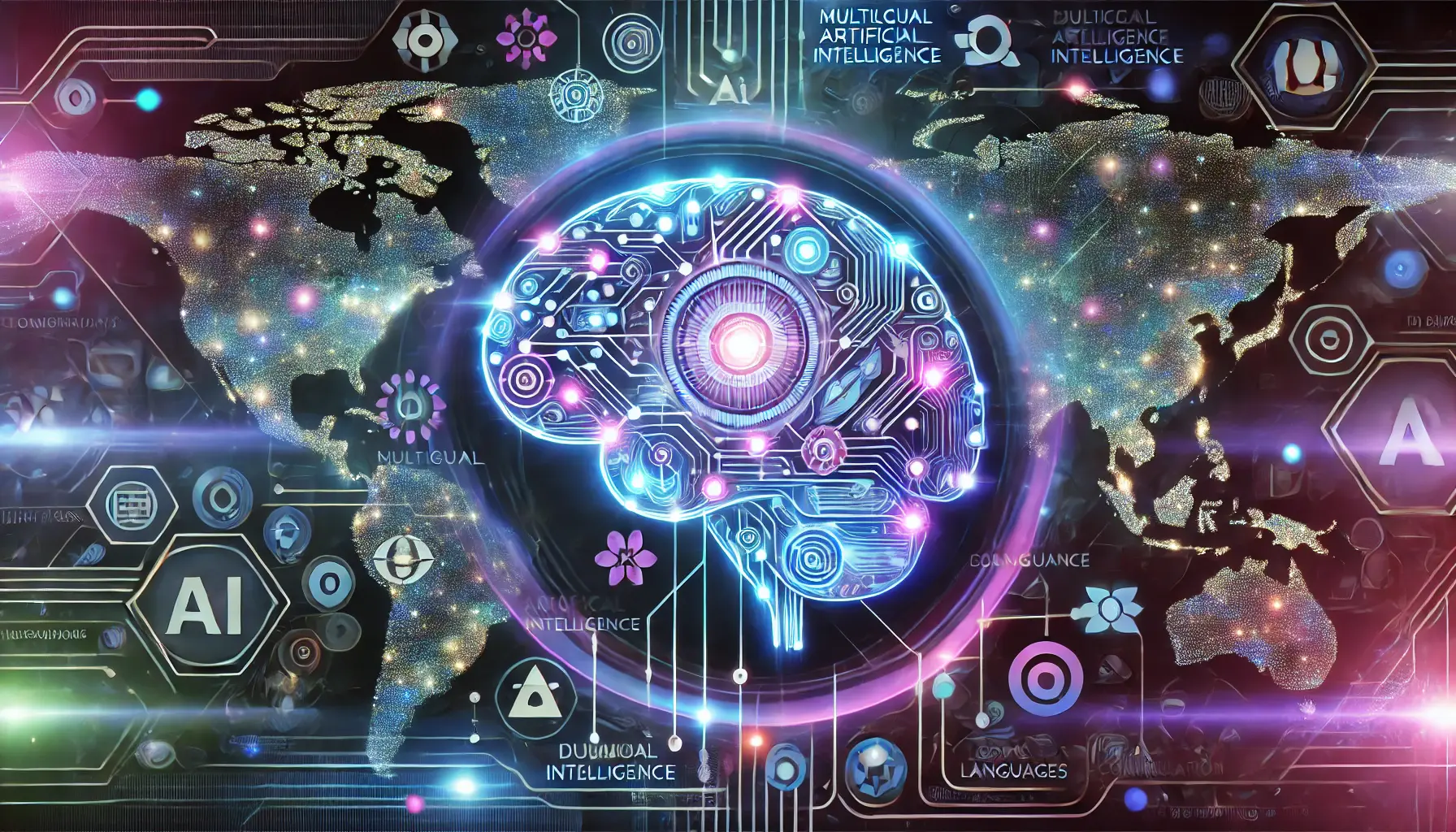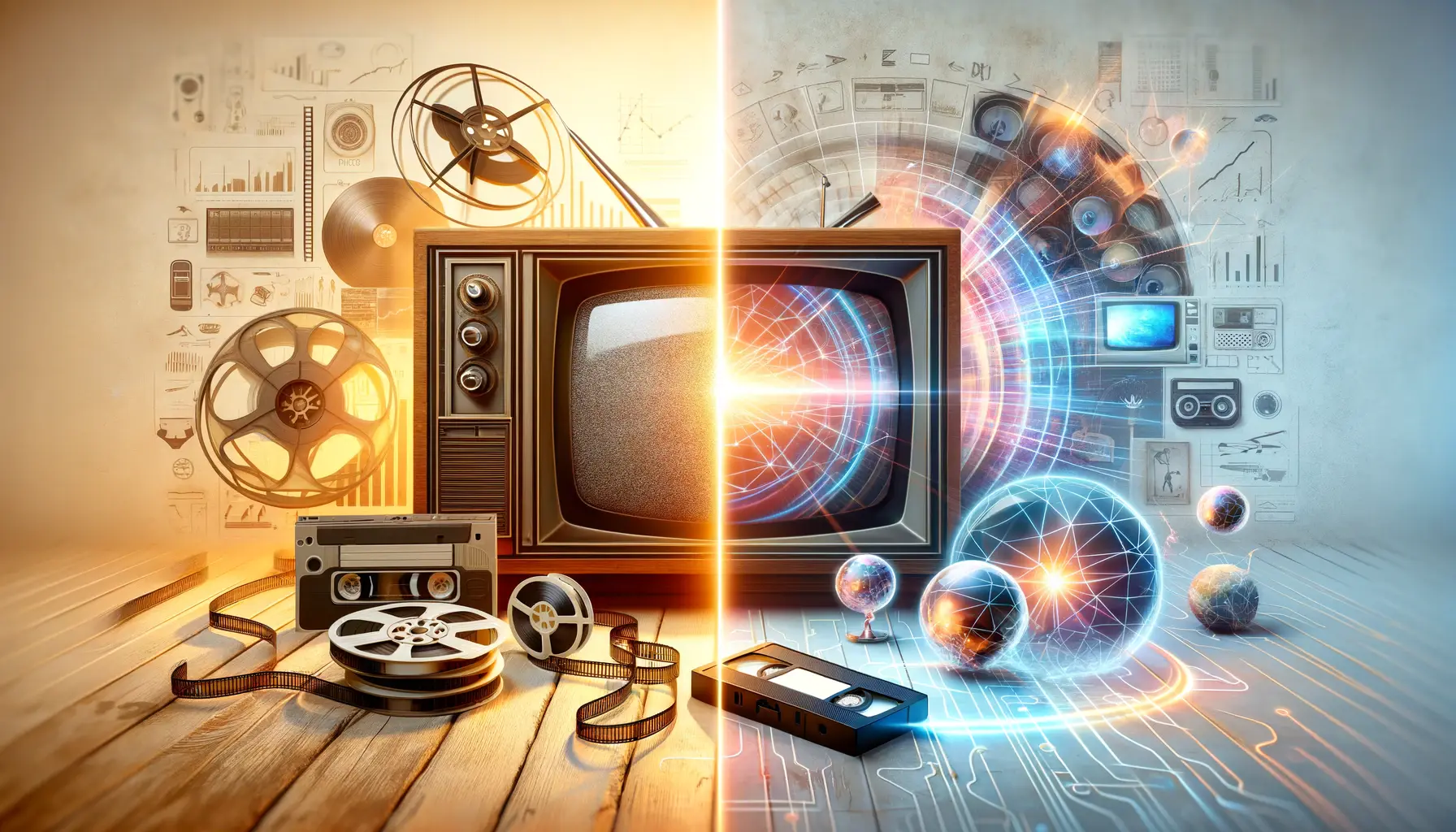The realm of video production is on the cusp of a transformative era, heralded by the advent of artificial intelligence technologies that promise to redefine the creative landscape.
Among these innovations, OpenAI’s Sora stands out as a beacon of potential, offering a glimpse into a future where the boundaries between imagination and reality blur.
This article delves into the implications of AI’s integration into video production, focusing on Sora’s role in shaping this exciting new frontier.
As we embark on this exploration, it’s essential to recognize the seismic shift Sora represents in the video production industry.
By enabling creators to transform text prompts into photorealistic videos, Sora not only democratizes the filmmaking process but also introduces a level of efficiency and creativity previously unattainable.
This breakthrough has the potential to unlock new forms of storytelling, making it a pivotal moment for filmmakers, content creators, and audiences alike.
- Revolutionizing Creativity with AI
- Democratizing Video Production
- Transforming Storytelling and Narrative Techniques
- Impact on Industry Dynamics and Professional Roles
- Exploring Ethical Considerations and Societal Impact
- Future Trends and Evolution in AI Video Production
- Enhancing Audience Engagement Through AI
- Embracing the Future of AI in Video Production
- FAQs: The Future of AI in Video Production
Revolutionizing Creativity with AI
Unleashing New Creative Possibilities
The introduction of Sora by OpenAI marks a significant milestone in the evolution of video production.
This AI-driven tool empowers creators to bring their visions to life with unprecedented ease and flexibility.
Imagine crafting detailed, dynamic scenes from mere text descriptions — a process that once required extensive resources, now simplified through AI.
Sora’s ability to understand and visualize complex narratives heralds a new era of creative freedom, where the only limit is the creator’s imagination.
Moreover, Sora’s impact extends beyond individual creators to the entire ecosystem of video production.
By lowering the barriers to entry, it opens the door for a diverse array of voices to share their stories.
This inclusivity enriches the cultural tapestry of media, introducing fresh perspectives and narratives that might have remained untold due to the prohibitive costs and technical challenges of traditional filmmaking.
Enhancing Efficiency in Production
The efficiency brought about by Sora is nothing short of revolutionary.
Video production, known for its time-consuming and labor-intensive processes, can now benefit from AI’s ability to rapidly generate content.
This acceleration in production timelines not only reduces costs but also allows for greater experimentation and iteration.
Filmmakers can explore multiple creative avenues without the fear of escalating budgets, fostering an environment where innovation thrives.
Furthermore, Sora’s advanced capabilities in rendering realistic textures, lighting, and dynamics offer a level of detail that challenges the distinction between AI-generated content and traditional cinematography.
This leap in quality ensures that even independent projects can achieve a polished, professional aesthetic, leveling the playing field between creators with varying budgets and resources.
Sora’s introduction to the video production landscape signifies a paradigm shift, where creativity is unleashed, and efficiency is maximized, heralding a future ripe with possibilities for storytellers and audiences alike.
Democratizing Video Production
The democratization of video production through AI technologies like Sora is a game-changer for the industry.
By making high-quality video production accessible to a broader audience, Sora is breaking down the traditional barriers that have limited who can create and share their stories.
This shift has profound implications for content diversity, creator opportunities, and audience engagement.
Key aspects of this democratization include:
- Lowering Financial Barriers: Traditional video production can be prohibitively expensive, requiring significant investments in equipment, locations, and talent. Sora’s AI-driven approach minimizes these costs, enabling creators with limited budgets to produce content that stands shoulder to shoulder with big-budget productions.
- Expanding Creative Horizons: With Sora, individuals and small teams can execute complex video projects that would have previously required the resources of a large studio. This opens up a world of creative possibilities, from indie filmmakers exploring niche genres to educators creating immersive learning experiences.
- Enhancing Global Representation: By making video production more accessible, Sora empowers voices from diverse cultural, geographical, and socio-economic backgrounds. This increased representation enriches the global media landscape with stories and perspectives that have been underrepresented in mainstream channels.
Impact on Independent Creators
For independent creators, Sora is a powerful tool that levels the playing field.
It allows them to compete with larger studios in terms of production quality and narrative complexity.
This empowerment is not just about creating content; it’s about reshaping the narrative around who gets to be a storyteller in the digital age.
Considerations for independent creators include:
- The ability to iterate quickly on creative ideas, reducing the time from concept to completion.
- Opportunities to experiment with genres and styles that were previously out of reach due to technical or financial constraints.
- The potential to reach a global audience through platforms that prioritize content quality and originality over production budget.
Challenges and Opportunities
While the democratization of video production presents exciting opportunities, it also poses challenges.
Creators must navigate a landscape where the ease of content creation could lead to market saturation.
Standing out in a crowded space requires not only creativity but also a keen understanding of audience engagement and platform algorithms.
Strategies for success in this new environment include:
- Focusing on niche markets or underserved audiences to build a dedicated following.
- Leveraging social media and content platforms to gain visibility and engage with viewers.
- Continuously learning and adapting to new AI tools and technologies to maintain a competitive edge.
The democratization of video production through AI like Sora represents a significant shift towards inclusivity and diversity in media. It offers independent creators a platform to share their unique stories, contributing to a richer, more varied cultural narrative.
Transforming Storytelling and Narrative Techniques
The advent of AI in video production, epitomized by tools like Sora, is not just changing the technical landscape but is also profoundly influencing storytelling and narrative techniques.
This transformation allows for the exploration of new narrative structures and storytelling methods that were previously challenging or impossible to achieve.
Key transformations in storytelling include:
- Non-linear Narratives: AI’s ability to generate content quickly and efficiently makes it easier for creators to experiment with non-linear storytelling, offering audiences a more interactive and immersive experience.
- Hyper-realistic Visuals: The photorealistic capabilities of AI like Sora enable the creation of visually stunning scenes that can bring fantastical worlds to life, enhancing the storytelling with visuals that captivate and engage.
- Personalized Content: AI can tailor narratives to individual viewers, creating personalized story experiences. This could revolutionize how audiences consume video content, making it a more interactive and engaging process.
Enhanced Creative Expression
With Sora, filmmakers and content creators have at their disposal a tool that significantly enhances creative expression.
The ability to quickly produce high-quality video content from simple text prompts opens up a realm of possibilities for exploring themes, characters, and settings in depth.
This technological leap forward allows creators to focus more on the art of storytelling, pushing the boundaries of creativity and narrative depth.
Examples of enhanced creative expression include:
- Creating complex, multi-layered worlds that are rich in detail and atmosphere.
- Experimenting with avant-garde narrative forms and visual storytelling techniques.
- Developing characters and plots that evolve based on viewer interactions or feedback, leading to dynamic storytelling that resonates on a personal level.
Challenges in Authenticity and Emotional Connection
Despite the exciting possibilities, the use of AI in storytelling also presents challenges, particularly concerning authenticity and emotional connection.
As AI-generated content becomes more prevalent, creators must navigate the fine line between leveraging technology for creative enhancement and preserving the human touch that drives emotional engagement in storytelling.
Strategies to maintain authenticity include:
- Blending AI-generated content with human creativity to ensure stories retain emotional depth and authenticity.
- Using AI as a tool to support rather than replace human storytelling, keeping the creator’s voice and vision at the forefront.
- Engaging with audiences to understand their preferences and feedback, ensuring that AI-enhanced storytelling remains relevant and impactful.
The transformation of storytelling and narrative techniques through AI like Sora represents a significant evolution in video production. While it offers vast creative possibilities, maintaining a balance between technological innovation and authentic storytelling remains crucial.
Impact on Industry Dynamics and Professional Roles
The integration of AI technologies like Sora into video production is reshaping industry dynamics and the roles of professionals within it.
As AI streamlines and automates aspects of content creation, the landscape for filmmakers, editors, and other industry professionals is undergoing a significant transformation.
This shift presents both opportunities for growth and challenges to traditional roles and workflows.
Understanding the impact on industry dynamics:
- Shift in Skill Sets: The demand for technical skills, including AI literacy and digital content creation, is increasing. Professionals must adapt by acquiring new competencies to stay relevant in an AI-integrated industry.
- Collaborative Opportunities: AI opens up new avenues for collaboration between technologists and creatives. This convergence of fields can lead to innovative storytelling techniques and richer, more engaging content.
- Redefined Roles: Traditional roles in video production are evolving. For instance, editors might need to become proficient in AI tools to enhance storytelling, while directors could leverage AI to explore new narrative possibilities.
Adapting to Technological Advancements
As the industry navigates these changes, professionals are finding ways to adapt.
Embracing AI technologies like Sora not only enhances the creative process but also offers a competitive edge.
By integrating AI into their workflows, industry professionals can unlock new creative potentials, streamline production processes, and deliver content that meets the evolving expectations of audiences.
Strategies for adaptation include:
- Continuous learning and professional development to master AI tools and applications in video production.
- Exploring interdisciplinary collaborations that merge technical and creative expertise.
- Staying informed about industry trends and technological advancements to anticipate and respond to changes in content creation and distribution.
Navigating Ethical and Employment Concerns
The rise of AI in video production also raises ethical questions and concerns about job displacement.
As AI capabilities expand, the industry must address the implications for employment and ensure that technological advancements do not come at the cost of ethical standards or professional livelihoods.
Addressing these concerns involves:
- Developing ethical guidelines for AI use in video production to ensure responsible and fair practices.
- Creating pathways for professionals to transition into new roles or areas of expertise within the evolving landscape.
- Promoting a balanced approach to AI integration that values human creativity and judgment as irreplaceable elements of the storytelling process.
The impact of AI on industry dynamics and professional roles underscores the need for a proactive and adaptive approach. By embracing change, fostering continuous learning, and addressing ethical considerations, the video production industry can navigate the challenges and opportunities presented by AI technologies like Sora.
Exploring Ethical Considerations and Societal Impact
The integration of AI in video production, particularly with tools like Sora, brings to the forefront a range of ethical considerations and potential societal impacts.
As these technologies become more sophisticated, their ability to generate realistic content swiftly raises questions about authenticity, misinformation, and the broader implications for society.
Key ethical considerations include:
- Authenticity and Trust: The ease with which AI can create realistic videos challenges our notions of authenticity and trust in media. Distinguishing between AI-generated content and genuine footage becomes increasingly difficult, potentially eroding public trust in digital media.
- Misinformation and Manipulation: AI’s capacity to produce convincing fake content can be exploited to spread misinformation or manipulate public opinion. This poses significant risks to democratic processes, social harmony, and individual reputations.
- Privacy and Consent: The use of AI to generate videos featuring individuals without their consent raises privacy concerns. It’s crucial to establish clear guidelines and consent mechanisms to protect individuals’ rights in the age of AI-generated content.
Addressing Ethical Challenges
To mitigate these ethical challenges, the industry must adopt responsible practices and develop robust frameworks for the ethical use of AI in video production.
This includes implementing transparency measures, such as watermarking AI-generated content, and fostering public awareness about the capabilities and limitations of AI technologies.
Strategies for ethical AI use in video production:
- Developing industry-wide standards and ethical guidelines for AI-generated content.
- Enhancing AI literacy among creators and audiences to foster informed engagement with AI-generated media.
- Collaborating with policymakers, technologists, and ethicists to address the societal implications of AI in media production.
Societal Impact and the Future of Media
The societal impact of AI in video production extends beyond ethical considerations.
It encompasses the democratization of content creation, the evolution of storytelling, and the potential for fostering a more inclusive and diverse media landscape.
However, realizing these positive outcomes requires careful navigation of the ethical challenges posed by AI.
The future of media in the age of AI:
- Increased accessibility to content creation tools could lead to a more diverse range of voices and stories being shared, enriching the cultural landscape.
- AI-driven innovations in storytelling and production could enhance the quality and engagement of video content, offering audiences new and immersive experiences.
- By addressing ethical concerns proactively, the industry can harness AI’s potential to positively transform media production and consumption, while safeguarding societal values and trust.
The exploration of ethical considerations and societal impact underscores the dual-edged nature of AI in video production. While offering immense creative possibilities, it necessitates a commitment to ethical practices and societal well-being to ensure that the advancements in AI serve to enrich rather than diminish the integrity and diversity of our media landscape.
Future Trends and Evolution in AI Video Production
The landscape of video production is poised for unprecedented changes as AI technologies like Sora continue to evolve.
The future of this field is not just about the enhancement of current capabilities but also about the emergence of new trends that could redefine what is possible in storytelling, content creation, and audience engagement.
Anticipated future trends in AI video production include:
- Interactive and Immersive Content: The advancement of AI will enable the creation of more interactive and immersive video experiences, where viewers can influence or change the narrative in real-time, leading to personalized storytelling.
- AI-driven Virtual Reality (VR) and Augmented Reality (AR): As AI becomes more integrated with VR and AR technologies, creators will have the tools to produce highly immersive environments that offer new ways for audiences to experience stories and information.
- Automated Video Editing: AI will increasingly automate the editing process, using advanced algorithms to optimize pacing, transitions, and narrative flow based on predefined styles or audience feedback, significantly reducing production times.
Technological Advancements and Creative Possibilities
The continuous improvement of AI models like Sora will unlock new creative possibilities, making it easier for creators to visualize complex scenes or generate content that adapts to viewer preferences.
These advancements will not only enhance the visual quality of productions but also introduce new forms of narrative complexity and depth that were previously difficult or costly to achieve.
Implications for creators and the industry:
- Creators will need to stay abreast of technological developments to fully leverage the capabilities of AI in their work.
- The industry may see a shift towards more dynamic and collaborative content creation processes, where AI plays a central role in bringing diverse creative visions to life.
- Audiences will come to expect more personalized and engaging content, driving further innovation in how stories are told and experienced.
Preparing for the Future
As we look towards the future of AI in video production, it’s clear that both opportunities and challenges lie ahead.
Creators, industry professionals, and audiences alike will need to navigate these changes thoughtfully, embracing the potential of AI to enhance storytelling while remaining mindful of ethical considerations and the importance of human creativity.
Key considerations for the future include:
- Investing in education and training to develop the skills necessary to work effectively with AI technologies.
- Encouraging ethical innovation and the development of standards to guide the responsible use of AI in video production.
- Fostering a culture of collaboration between technologists and creatives to ensure that AI tools enhance rather than replace human creativity.
The future of AI in video production is bright, with the potential to revolutionize how we create, share, and experience video content. By staying informed, adaptable, and ethically grounded, the industry can harness the power of AI to open up new horizons of creativity and storytelling.
Enhancing Audience Engagement Through AI
The advent of AI technologies like Sora in video production is not only transforming how content is created but also how it engages and interacts with audiences.
As we delve into the future of video production, a significant trend emerges: the use of AI to create more personalized, interactive, and immersive viewing experiences.
This evolution promises to deepen audience engagement, offering viewers content that is not only visually captivating but also more relevant and responsive to their preferences and behaviors.
Strategies for enhancing audience engagement through AI:
- Personalized Content Recommendations: AI can analyze viewer preferences to deliver personalized content recommendations, ensuring that audiences discover videos that align with their interests and viewing habits.
- Interactive Storytelling: AI enables the creation of interactive stories where viewers can choose different narrative paths. This level of engagement transforms passive viewing into an active, personalized experience.
- Immersive Experiences: By integrating AI with technologies like virtual reality (VR) and augmented reality (AR), creators can produce immersive experiences that transport audiences into the story, offering a new dimension of engagement.
Building Deeper Connections with Viewers
The potential of AI to build deeper connections with viewers lies in its ability to understand and anticipate audience needs.
By leveraging data on viewing patterns, preferences, and feedback, AI can help creators tailor their content to better resonate with their audience, fostering a stronger sense of connection and loyalty.
Implications for content creators and marketers:
- Content creators can use AI insights to refine their storytelling techniques, ensuring that their narratives strike a chord with their target audience.
- Marketers can leverage AI-generated analytics to craft campaigns that more effectively reach and engage viewers, maximizing the impact of their promotional efforts.
- Both creators and marketers have the opportunity to explore new formats and platforms for content distribution, driven by AI’s ability to match content with the most receptive audiences.
Challenges in Maintaining Authenticity
While AI opens up new avenues for audience engagement, it also presents challenges in maintaining authenticity.
As content becomes more personalized and data-driven, creators must balance the use of AI with a commitment to genuine storytelling and viewer connection.
Ensuring that AI-enhanced content remains authentic and true to the creator’s vision is crucial for maintaining trust and credibility with audiences.
Addressing authenticity challenges involves:
- Setting clear guidelines for the use of AI in content creation, ensuring that it supports rather than supplants creative decision-making.
- Engaging with audiences to gather feedback on AI-enhanced content, using insights to guide future content development in a way that honors viewer preferences while staying true to the creator’s artistic intent.
- Continuously evaluating the impact of AI on viewer perceptions and relationships, adjusting strategies as needed to preserve the integrity and authenticity of the content.
Misconceptions about AI’s role in video production often overlook its potential to enhance human creativity and deepen audience connections. By thoughtfully integrating AI, creators can unlock new possibilities for engagement, crafting content that is not only innovative but also resonant and meaningful to viewers.
Embracing the Future of AI in Video Production
The journey through the evolving landscape of AI in video production, particularly with the advent of OpenAI’s Sora, reveals a future brimming with possibilities.
As we stand on the precipice of this new era, it’s clear that the integration of AI technologies is not merely a trend but a fundamental shift in how content is created, shared, and experienced.
The implications of this shift extend beyond the technical realm, touching on creative expression, industry dynamics, ethical considerations, and the very nature of storytelling itself.
Navigating the Path Forward
The path forward for AI in video production is marked by both exciting opportunities and significant challenges.
As creators, professionals, and audiences navigate this landscape, several key considerations emerge:
- The need for continuous learning and adaptation to leverage AI technologies effectively.
- The importance of ethical guidelines and standards to ensure responsible use of AI.
- The potential for AI to democratize content creation, enabling a more diverse range of voices and stories.
Realizing the Potential of AI
To fully realize the potential of AI in video production, a collaborative effort across the industry is essential.
This includes fostering partnerships between technologists and creatives, engaging with audiences to understand their evolving preferences, and advocating for policies that support innovation while protecting individual rights and societal values.
Looking to the Future
The future of AI in video production is not just about the technologies we will develop but also about the stories we choose to tell and the world we envision.
As AI becomes an integral part of the creative process, it offers us the tools to imagine and create experiences that were once beyond our reach.
However, the true power of AI lies in its ability to augment human creativity, enabling us to explore new narratives, connect with audiences in meaningful ways, and reflect the richness of the human experience through the art of video production.
In conclusion, the future of AI in video production is a canvas of limitless possibilities, painted with the brushstrokes of innovation, creativity, and ethical consideration.
As we embrace this future, let us do so with a commitment to harnessing the power of AI to enrich our stories, engage our audiences, and elevate the art of video production to new heights.
FAQs: The Future of AI in Video Production
Explore commonly asked questions about the transformative role of AI in video production, offering insights into how this technology is reshaping the industry.
No, AI is designed to augment human editors by automating routine tasks, thereby enhancing creativity and efficiency in the video production process.
AI automates editing, color correction, and effects, speeding up post-production and allowing creators to focus on storytelling and creativity.
AI offers numerous benefits, including reduced production times, cost savings, enhanced creativity, and the ability to generate personalized content.
Yes, AI technologies like Sora can generate highly realistic and detailed videos from text prompts, revolutionizing content creation.
While AI presents ethical challenges, responsible use and adherence to guidelines can mitigate risks related to privacy, consent, and misinformation.
AI will enable more immersive and interactive storytelling, allowing creators to explore complex narratives and engage audiences in novel ways.
Professionals should develop AI literacy, technical skills for AI tools, and an understanding of how AI can be integrated into creative workflows.
Creators should stay informed about AI advancements, experiment with AI tools, and consider how AI can enhance their storytelling and production processes.













